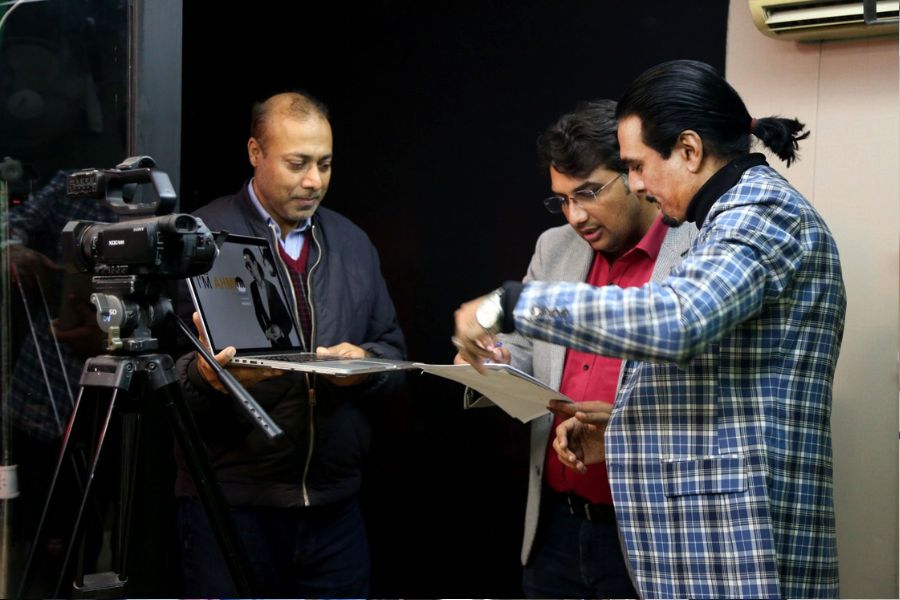Table of Contents for First Feature
Hey there, fellow storytellers! Ahmed Afridi here, and let me tell you, there’s nothing quite like the thrill of bringing your own feature film to life. It’s a wild ride, but with the right roadmap, you can turn that story simmering in your brain into a cinematic masterpiece. Let’s break down the essentials to get your first feature film rolling in 2024.
1. Script Like a Champ Feature Film:

This is the foundation of your feature film. Pour your heart and soul into writing a captivating story with well-developed characters and a clear arc. Network with screenwriters‘ groups or take online courses like I offered online and physical classes to hone your craft. Don’t be afraid to join screenwriting groups or take online courses, practice makes perfect.
2. Budget Like a Boss:
Creating a feature film requires managing finances wisely, as they can vanish quickly into the abyss of production expenses. It’s crucial to be realistic about your vision and create a budget that aligns with it. Take time to research costs for locations, equipment rentals, and crew payments. Being resourceful is key; consider exploring grants, crowdfunding platforms such as Kickstarter or pitching your idea to potential investors (even that elusive rich uncle!). A well-crafted business plan is your ticket to securing financing and turning your cinematic dreams into reality without breaking the bank.
3. Assemble Your Dream Team:
Building a masterpiece in filmmaking requires collaboration. Surround yourself with passionate individuals who share your love for creating feature films. Seek out a talented director, a producer known for attention to detail, a cinematographer who can capture moments of magic through their lens, and an editor skilled at crafting storytelling gold from your footage. Online platforms and film schools are valuable resources for connecting with potential collaborators who can bring your vision to life. Websites like Mandy and film school networks are great places to start assembling your team of talented professionals.
4. Pre-Production: The Calm Before the Storm:
This is where the planning gets intense (but oh-so-worth-it). Scout locations that fit your story, secure those permits, finalize your shot list, and create a production schedule tighter than a drum. Pre-production is the foundation for a smooth shoot, so don’t skimp on the details!
Scouting Locations: Imagine your story needs a scene in a quaint bookstore. During pre-production, the location manager would scout bookstores in your area. They would consider factors like lighting, noise levels, space for the crew, and permission to feature film.
Securing Permits: Filming on public or private property often requires permits. In our bookstore
Example: You might need a permit from the owner allowing you to film and potentially move things around.
Finalizing the Shot List: This is a detailed breakdown of every single shot you plan to feature film. It ensures you capture everything you need and helps create a filming schedule.
Creating a Production Schedule: This is like a roadmap for your shoot. It factors in shot lists, location availability, crew schedules, and equipment needs. A tight schedule keeps things efficient and avoids costly delays.
5. Let’s Make a Movie! (Production Time):
Lights, camera, Action! Now’s the time to bring your vision to life. Lead your team with a clear head and a positive attitude. Communication is key, so ensure everyone’s on the same page to capture those cinematic moments.
Clear Vision and Communication:
Example: Director Christopher Nolan is known for his meticulous planning and detailed storyboards. He communicates his vision clearly to his crew beforehand, ensuring everyone understands the desired look and feel of each scene.
Positive and Collaborative Environment:
Example: Pixar fosters a creative and collaborative environment where animators, storytellers, and directors work together to bring their ideas to life. This positive atmosphere allows for open communication and problem-solving.
6. Editing: Where the Magic Happens:
The editing room is your playground! Work with your editor to assemble the footage, refine the pacing, and add that extra layer of magic with sound design and music. This is where your raw feature film transforms into a polished gem.
Editing Techniques for Feature Film:
Assembling Footage: This is the process of putting together the different shots you filmed in the order you want them to appear in the final video.
Refining Pace: This involves adjusting the speed and rhythm of your edits to create a certain feeling or mood in your viewers. You can use slow motion, fast cuts, or pauses for dramatic effect.
Examples of Editing at Work:
Action Movie: In an action movie, the editing is often fast-paced and uses quick cuts to create a sense of excitement and urgency.
Comedy: In a comedy, the editing might use slow motion or reaction shots to emphasize a joke.
Suspense Thriller: In a suspense thriller, the editing might use long takes and close-ups to build tension and suspense.
Sound Design and Music:
Sound design Involves adding sound effects to your video, such as footsteps, explosions or Foley sounds (everyday sounds used to create a specific effect).
Music Can be used to set the mood and tone of your video as well as to create emotional connections with your viewers.
7. Festival Frenzy!

Get ready for your film on the world! Film festivals are a fantastic platform to showcase your work, connect with audiences, and maybe even snag a distribution deal. Research festivals that align with your genre and target audience. Remember, preparation is key, so submit your film well in advance and embrace the festival buzz!
Find the Perfect Fit: Research festivals that align with your film’s genre and target audience. Look for festivals that have a history of showcasing films similar to yours. Platforms like FilmFreeway can help you discover relevant festivals.
Example: Let’s say you made a dark comedy. You might target festivals that have premiered other dark comedies in the past, such as Sundance or SXSW.
8. Beyond the Festivals:
Distribution in 2024 is all about options! Explore VOD platforms to reach a wider audience, or consider self-distribution services like Vimeo On Demand. There’s a whole world out there waiting to see your feature film!
9. Learn, Grow, and Conquer!
Making a film is a continuous learning process. Embrace the challenges, analyze what worked and what didn’t, and use those lessons to fuel your next filmmaking adventure. The industry constantly evolves, so stay updated on trends and new technologies. There’s a wealth of resources online, from YouTube channels like Film Riot and Indy Mogul to online forums.
Conclusion
With a strong script, a passionate team, and meticulous planning, you can navigate the exciting yet challenging world of filmmaking. Embrace the learning process, adapt to the ever-evolving industry, and get ready to unleash your cinematic masterpiece on the world.
FAQ’s
1. How can I improve my screenwriting skills?
A: Network with screenwriters’ groups, take online courses, practice writing.
2. How do I create a realistic budget for my feature film?
A: Research location costs, equipment rentals, crew payments. Consider grants, crowdfunding, or investors.
3. Where can I find talented crew members for my film?
A: Online platforms like Mandy, film schools, or film school networks.
4. What are the key things to do in pre-production?
A: Scout locations, secure permits, finalize shot list, create a production schedule.
5. How can I ensure clear communication on set?
A: Have a clear vision, communicate it beforehand like director Christopher Nolan.

